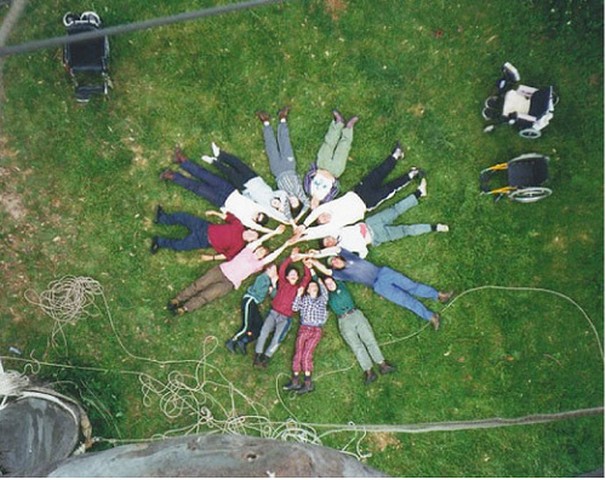December 1st is observed around the world as AIDS Day and the occasion is largely publicized. Unlike the attention World AIDS Day receives, World Disability Day barely registers on the world media’s radar.

Circle of friends [1] by Flickr user Jimee, Jackie, Tom and Asha [2] and used under a creative commons license [3]
Celebrated every year on December 3rd, World Disability Day honors the contribution made to our world by those with physical and mental handicap. In case of South Asia, there is severe stigma attached any kind of physical and mental handicap. World Disability Day is an opportunity to spread awareness about the rights of the handicapped and that being differently able is not a sin or something to be ashamed of.
In India, activist Javed Abidi [4], the country’s leading advocate for the rights of the handicapped, will lead an event called “Dilli Chalo” or “Lets go to Delhi” to mark the occasion. It will be held at the historic India Gate.
Mr. Abidi says that India has made some progress in securing rights of the disabled but more needs to be done.
“Now, in India, as we are aware, we have had the Disability Act for the last 12 years. Last year we thought was a momentous year for two reasons. One was that our country ratified the UN Convention, and the second was that we also got the XI Plan. And in the XI Plan…..for the first time, there is a distinct chapter or a section on disability. And we thought that things were going to change. ……if we were look at the last one year, we find that things have not really moved the way we had expected them to move….”
Along with addressing legal issues related to the rights of the disabled and the opportunities they deserve, efforts are also needed to help those living in abject poverty because of their physical condition.
A news report published by the The National [5]shows how urgently India’s poor disabled citizens need their government to take steps to insure that they are able to live in dignity.
Shaikh Azizur Rahman reported this November that an elderly father taking care of two severely disabled bed ridden daughters has asked the Indian President that they be allowed to be euthanized. He said that he is too poor to take of his daughters who need round the clock care and attention. Fatema, one of his daughters, says that she too wants her life to end.
“I told my father many times to bring poison for me. Nobody is helping me to kill myself.”
Across the border in Pakistan, there is still the mountain of odds facing citizens with disability. Writing for Dawn [6], Zahid Abdullah, who works for the Center for Peace and Development in Islamabad, says that country still has a long way to go before those with different ability can feel that society values them too. He also expresses frustration at slow pace of legal reform regarding the rights of the disabled.
Like in India and Pakistan, the society in Nepal too views physical and mental handicaps as a result of past life’s sins. Handicapped are usually treated as sub human; they have very limited access to education and meaningful employment. Often you can see a person with physical disability begging on the streets to sustain life.
Meen Raj Panthi [7]says that families hide those with a disability to protect their honor and prestige:
“The notion that people with disabilities have equal rights and duty as any other individual, is largely absent from the popular mindset.”
Children are most vulnerable to discrimination. National Disabled and Helpless Upliftment Association [8] in Nepal cites an example of a little girl named Manisha held captive by her parents because she is blind:
“While her parents work at fields, she is often locked in her own room and tethered with rope by her parents because she has no one to look after her at home. But her elder brother and sister go to school.”
Thumbnail image [1] by Flickr user Shizhao [9] and used under a creative commons license [10]